Most of our Irish American clients long to be able to “walk in the footsteps” of their Irish ancestors in Ireland. They yearn to visit the home townlands in which their ancestors were born or lived before emigrating to the U.S. or elsewhere.
Kate has been able to do exactly that for her Byrne, Regan, Harney, Fitzpatrick, and Waters ancestors in Counties Wicklow, Tipperary, and Waterford.
As for Mike, he has been able to hold in his hands the soil on the homesteads of his Laide, Kennedy, Whelan and Doyle ancestors in Counties Kerry and Wexford.
And most importantly, we have been able to connect, visit and communicate with numerous long-lost cousins who are living in Ireland today!
So how does one attempt to identify where your Irish ancestors’ home townlands were in Ireland? The following six steps will hopefully allow you to do exactly that.
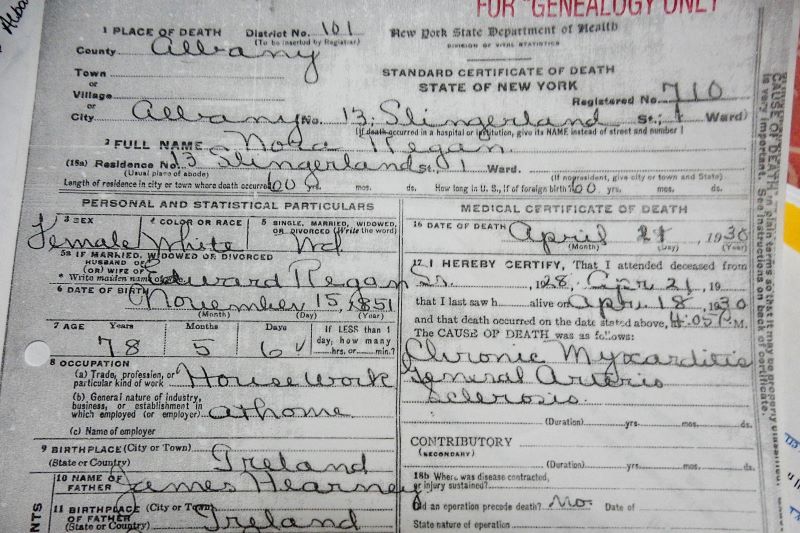
Death certificate for Kate’s great grandmother Norah Hearney Regan in Albany, NY. Norah’s mother’s surname is on the certificate. A great find indeed!
Step #1 – Identify your immigrant Irish ancestors.
Make sure as you develop a family tree back in time that you are following your own ancestors. For example, Mike’s immigrant ancestor James Doyle was one of several James Doyles living in the same area of northern New York State in the 1850s and 1860s. Don’t go down a “rabbit hole” by chasing the wrong person back in time. Compare all records found to make sure you are following the right person.
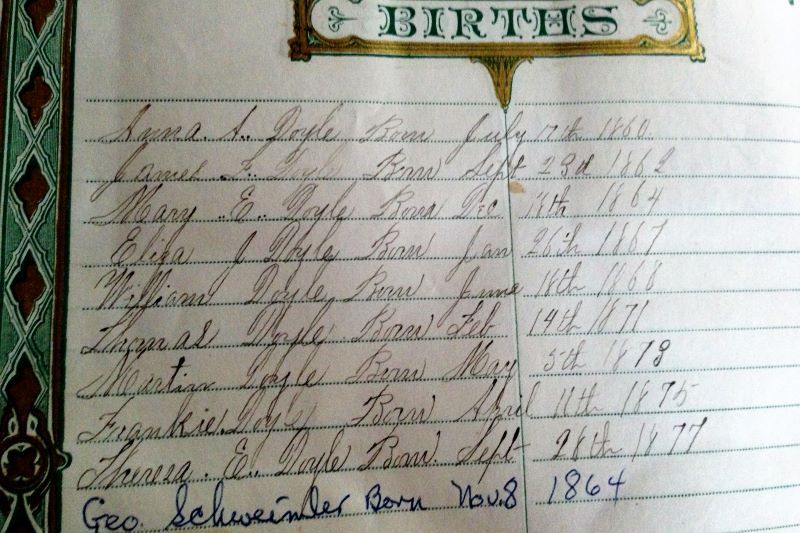
Family bible in which Mike’s Doyle ancestors’ births were recorded back to 1860.
Step #2 - Find out all you can about your immigrant ancestors and his/her family members in U.S. records.
Key facts to search for include vital records such as birth, marriage, and death, as well as military, census, cemetery, and immigration records. You can search for these records on sites such as Ancestry.com, My Heritage, and Family Search (free). Family history records (e.g. bibles, letters, historical newspapers, death certificates) can often be treasure troves. The purpose of this initial exploration of records is to prepare you for step #3 below.
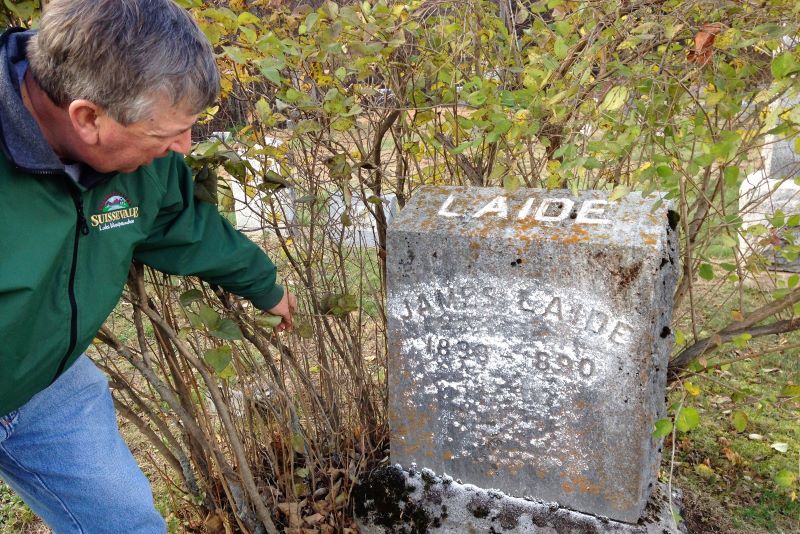
Mike’s 2nd great grandfather’s gravestone was lost in time behind overgrown shrubs until discovered by Kate.
Step #3 – Key facts you will want to uncover before you start searching Irish records.
Searching Irish records prematurely can also lead one down a “rabbit hole” that quickly becomes extremely frustrating. Before searching Irish record databases, arm yourself with as many facts as possible about your immigrant Irish ancestor including his or her approximate date of birth, immigration year, marriage year, parents’ names including surname of mother, names of siblings who may have also emigrated, and any other information that might help determine where in Ireland your ancestor lived. You most likely will not uncover all of the above records, but the more you can accumulate the greater your chances of finding your ancestor’s home townland.
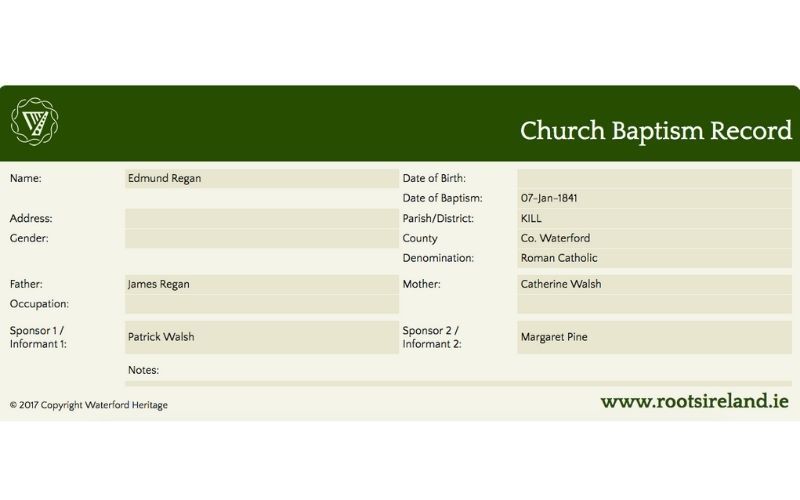
Kate’s great grandfather Edmund Regan’s 1841 baptism record on Roots Ireland website. The names of both of Edmund’s parents appear on the record.
Step #4 – Begin searching key Irish records for your immigrant Irish ancestor(s).
If your Irish ancestor emigrated after 1901, then begin by searching the 1901 and 1911 Ireland censuses (National Archives of Ireland website) for your ancestor or family members. If your ancestor was born or married in 1864 or later, then look for their civil birth and/or marriage record on the Irish Genealogy website. Both of these websites are free! As for subscription websites that hold the bulk of Irish vital records including pre-1864 baptisms and marriages, we recommend both Roots Ireland and Find My Past. With a little “Luck of the Irish,” you will identify one or more Civil, Catholic, or Church of Ireland parishes in which your immigrant ancestor was likely born, baptized, married, or lived.
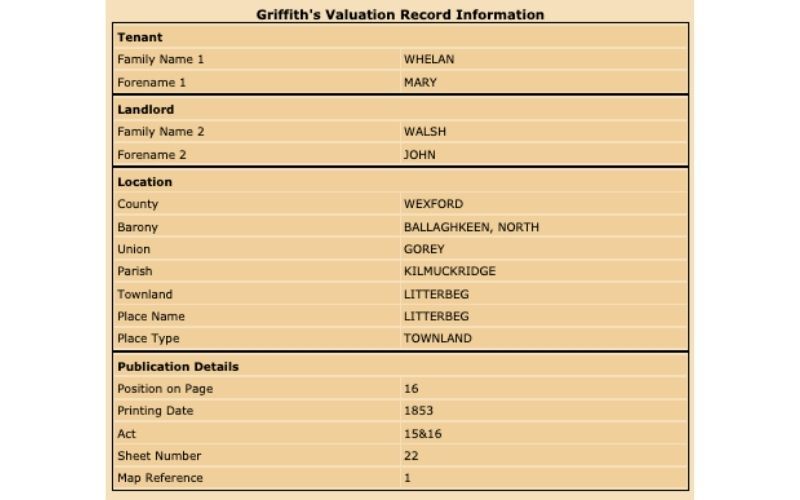
Griffith’s Valuation record for Mary Whelan, Mike’s 2nd great grandmother, living in Litterbeg townland in Co. Waterford in 1853.
Step #5 – Search Irish land records to find your ancestors’ home townlands.
The next step is to search the two main Ireland land evaluation records taken in the 1800s. If your ancestors and/or their parents were still in Ireland between 1848 and 1864, then search Griffith’s Valuation (National Library of Ireland website) which lists the head of household for each house that was required to pay a fee to the Irish government. For example, if you are looking for a James Doyle in a specific Civil Parish in Co. Wexford, then you can use Griffith’s Valuation to locate the exact townland(s) in which various James Doyles lived. With luck, you can identify the James Doyle who was your ancestor based on records you previously uncovered. If your ancestors emigrated before the late 1840s, then you can go back further in time by checking the Tithe Applotment Books (National Archives of Ireland website) recorded between 1823 and 1837. These books did not include all heads of households, but can still be valuable in helping you identify the home townland of your ancestors.
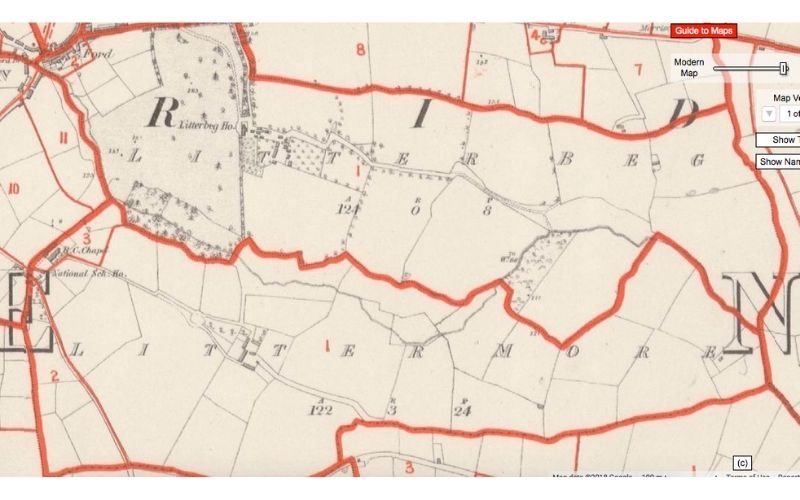
Historic map produced on Griffith’s Valuation website for Litterbeg townland where Mary Whelan lived in 1853.
Step #6 – Print out historic and modern-day overlay maps of your ancestors’ home townlands.
If you are able to find your ancestors on Griffith’s Valuation, then the website allows you to actually produce screenshots of the exact location where your ancestors lived at the time the valuation took place. It takes a little bit of manipulation, but you can produce a modern-day overlay map that will allow you to go directly to the townland(s) of your ancestors. You will then be able to plan a stop to your ancestors’ home townlands when you are able to visit Ireland. We have produced these maps for our own ancestors as well as for many of our clients. What will await you is an opportunity to “walk in the footsteps” of your ancestors and possibly hold in your hands soil from the land on which they lived!
The six steps described above are designed to provide you with a pathway back in time to determine the home townland(s) of your immigrant Irish ancestor(s). At first glance, it may seem like an easy task, but the reality is it will take persistence and patience as you work your way through the process of gathering all the critical pieces of information you will need in order to be successful. If the “Luck of the Irish” is with you, then you will find yourself on a “magical ancestral journey” indeed!
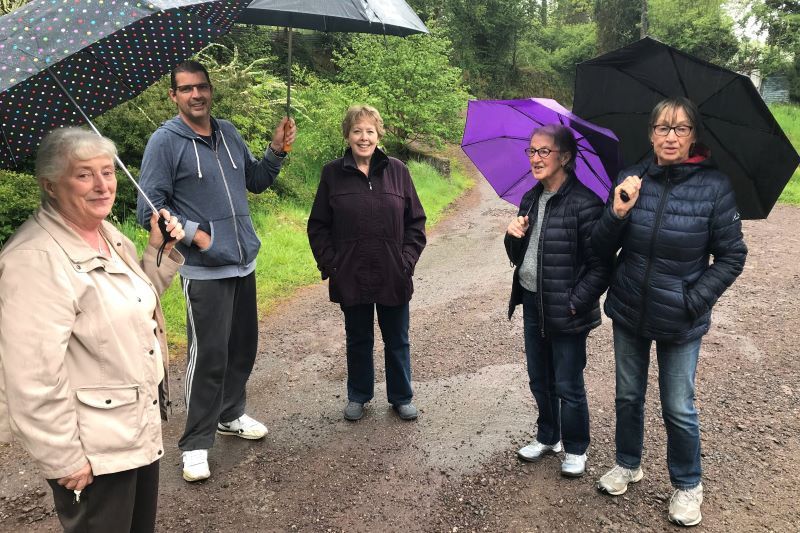
Kate with long lost cousins in Glenanore, Co. Waterford where her Hearney ancestors lived before emigrating to Albany, NY.
*Kate and Mike Lancor live in Moultonborough, NH, U.S. and have traveled to Ireland several times. They have also helped numerous clients determine where their ancestors lived on the Emerald Isle. Mike and Kate can be reached on their website Old Friends Genealogy or contact them via email at oldfriendsgenealogy@gmail.com. You can also visit their Old Friends Genealogy Facebook page.
* Originally published in 2021, updated in Aug 2022.
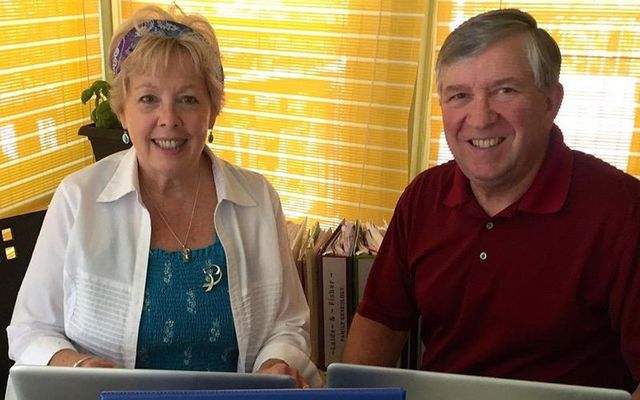

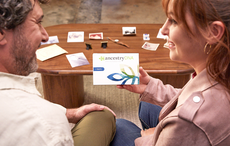
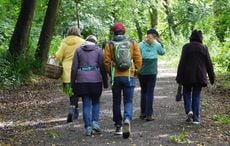
Comments